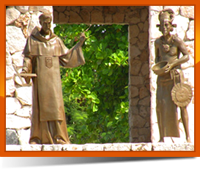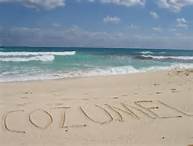 History of Cozumel
History of Cozumel
The growth and decline of the Mayan civilization is an unforgettable part of the prehispanic history of Cozumel. Originally, the Mayans were established in Guatemala, fifteen centuries before Christ. Their culture and influence then extended to the entire south: Mexico, Belize, Honduras, and El Salvador. In 200 ac, they began to build cities in the Yucatan Peninsula.
The advanced Mayan culture hit its peak from the VII century until the IX century. They considered Cozumel to be a sacred sanctuary and called it “Cuzaam Luumi” which means land or place of the swallows. They later shortened these two words to “Cuzamil”. When the Spanish arrived, the name adapted phonetically from “Cuzamil” to “Cozumel”.
In the Mayan culture, every woman was obligated to travel to the island at least once in her life to worship Ixchel, goddess of fertility. Ixchel was the wife of Itzamna, the supreme Mayan lord of the skies of the night and of the day. The women, in general, before hitting puberty, would set on their peregrination to the island to ask Ixchel for fertility and for a joyful motherhood. To this date, in more than forty sites around the island, archeologists continue to unearth small dolls that were once sacrificed in the fertility rituals.
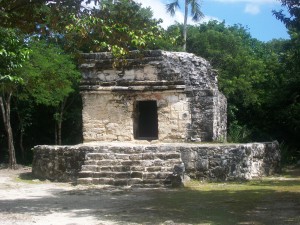
In the X century, the Mayan population began to decline. Experts speculate that the diminution is attributed to famine, plague, and civil disturbances within the culture. A primary influence was the aggressive Tolteca tribe that invaded from Campeche and throughout the west. They were natural warriors, in contrast to their Pacific predecessors. Many of the Mayans lost their life in the batal or were sacrificed, while some assimilated the conquering tribe. Around the XII century, the Tolteca cult (Feathered Serpent) dominated the Mayan culture.
Three centuries of confrontations between the two cultures ended in 1540 with the Spaniards invasion of the Yucatan Peninsula. In 1567, the last Mayan city, close to the Petén lake, was taken by the Spaniards, who put an end to the independence of an extraordinary culture. The Spanish arrived in Cozumel for the first time in 1518, before starting their conquest of the New World.
The first Spanish expedition to visit Cozumel was led by Juan de Grijalva on May 3rd, 1518 from Cuba. The following year Hernán Cortés stopped by the island on his way to Veracruz. The Grijalva and Cortés expeditions were both received peacefully by the Maya of Cozumel, unlike other expeditions on the mainland. Even after Cortés destroyed some of the Maya idols on Cozumel and replaced them with an image of the Virgin Mary, the native inhabitants of the island continued to help the Spanish resupply their ships with food and water so they could continue their voyages.When he left the island in 1530, the native civilization was in ruins. Unfortunately, one of the crew members of the ship had had smallpox, a disease that until this moment had not existed in America. The resulting epidemic killed thousands.
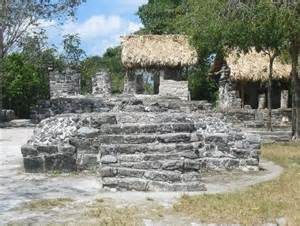 In 1518 there was a population of 20,000, but this was quickly reduced to 3000 by 1526, 300 by 1570, and by 1600 the island had been completely abandoned. The next two centuries passed by peacefully, with the exception of the Pirates who used Cozumel as a base of operations, including the infamous Henry Morgan and Jean Laffite.
In 1518 there was a population of 20,000, but this was quickly reduced to 3000 by 1526, 300 by 1570, and by 1600 the island had been completely abandoned. The next two centuries passed by peacefully, with the exception of the Pirates who used Cozumel as a base of operations, including the infamous Henry Morgan and Jean Laffite.
In 1848, the people sought refuge from the “War of the Castes” on the Yucatan Peninsula, took refuge on the island. The small town of El Cedral, on the south side of Cozumel conducts the most important religious celebration of the Island. This annual event is said to have started over 150 years ago by Casimiro Cárdenas. Cárdenas was one of a group that fled to the island from the village of Sabán, on the mainland, after an attack during the War of the Castes. The attackers killed many of the villagers, but Cárdenas survived whilst clutching a small wooden cross.
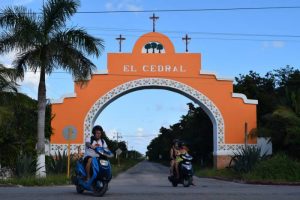 Legend has it that Cárdenas vowed to start an annual festival wherever he settled, to honor the religious power of this crucifix. Today, the original Holy Cross Festival forms part of the wider Festival of El Cedral, which includes fairs, traditional feasts, rodeos, bullfights, music, and competitions. The celebrations last about 5 days in all and are held every year at the end of April or beginning of May.
Legend has it that Cárdenas vowed to start an annual festival wherever he settled, to honor the religious power of this crucifix. Today, the original Holy Cross Festival forms part of the wider Festival of El Cedral, which includes fairs, traditional feasts, rodeos, bullfights, music, and competitions. The celebrations last about 5 days in all and are held every year at the end of April or beginning of May.
This often violent battle, was an effort to recuperate the Mayan land of the creoles; it culminated with the surrendering of the Mayan villages before the government troops of Yucatan in 1910. Important agricultural reforms and the liberty of the Indians resulted in the revolution of 1910-1917. By 1970, the population of Cozumel reached 10 000. As of the census in 2011, are more than 100 000 people living on this paradisiacal island.


